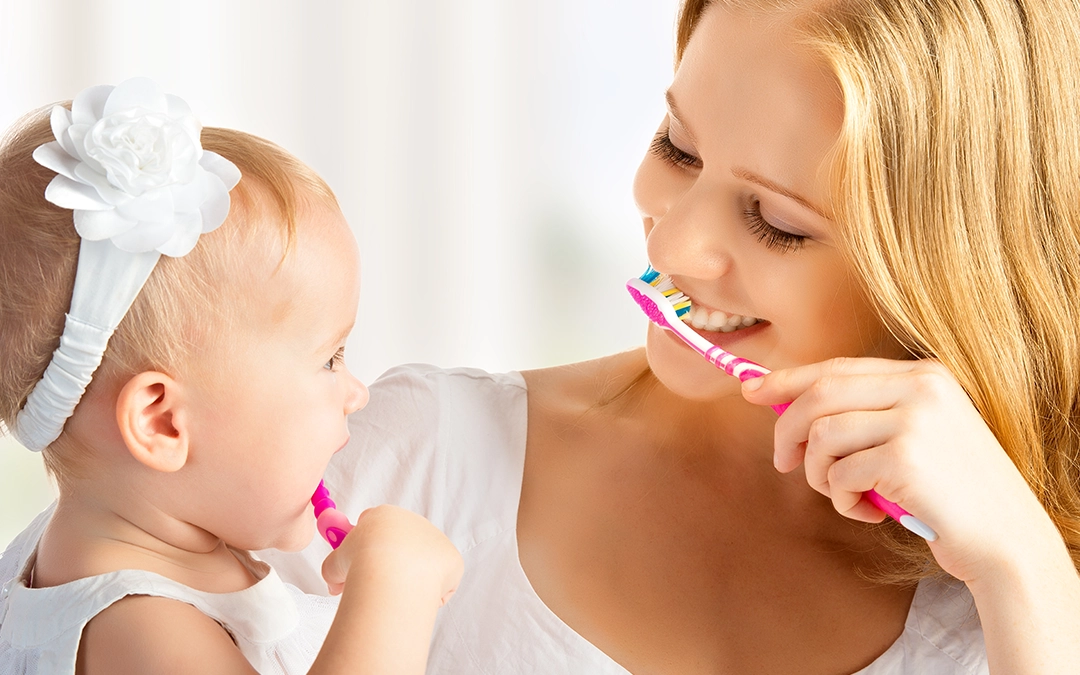Childhood dental care that works a charm
A child’s smile is a thing of wonder. Those tiny teeth are as functional as they are adorable, helping your child eat, speak clearly, and grow in confidence each day.With a little love, care, and the right habits early on, you can set your child up for a lifetime of healthy, happy smiles. The secrets to success are simpler than you might expect.

Start before the first tooth
Even before that first tiny tooth shows up, you should begin actively caring for your baby’s mouth. After feeds, gently wipe their gums with a clean, damp cloth. This simple step helps reduce bacteria in your baby’s mouth while getting your little one used to having their mouth cleaned. Building your baby’s brushing habits means you’re already set when those first teeth begin to appear.
During these early months, bub’s gums are busily getting ready for what’s to come. You might notice a bit more drooling, fussiness, or a need to chew on anything within reach. These are all completely normal signs that teething isn’t far away.You may find a chilled teether or a gentle gum massage can help ease the discomfort and keep your little one settled.
How baby teeth develop
Your baby’s first teeth usually appear when they’re around six months old. It’s an exciting milestone for every parent. Those tiny teeth don’t just make a smile sweeter; they work wonders for chewing, speaking, and guiding the teeth still to come.
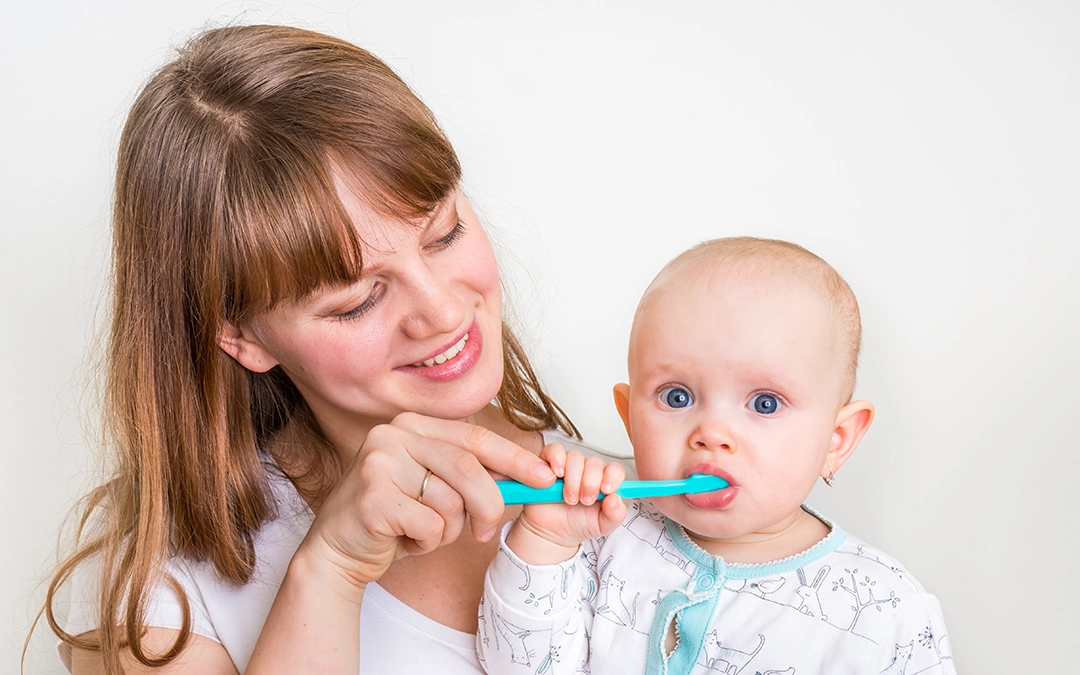
Here’s a general timeline of when you might expect those pearly whites to appear:
Central incisors (6–10 months): You would know these as the front teeth. Usually the lower front teeth arrive first, followed by the upper ones.
Lateral incisors (9–16 months): These appear next to the front pair, filling out that cute smile.
First molars (13–19 months): Molars are the back teeth used for grinding food. The ones nearer the front of the mouth, called first molars, often appear before the canines. This means your child will likely have a small gap at the corners of their smile after the first molars arrive and before the canines come through.
Canines (16–23 months): Usually appearing after the first molars and well known for their exaggerated appearance in vampire imagery, these pointed teeth emerge between the lateral incisors and the first molars. They help with tearing food and guiding the bite.
Second molars (23–33 months): These are the last baby teeth to come through, completing the full set of 20. By around age three, most children will have all their baby teeth, helping them chew well and speak clearly.
Things to watch as teeth come in
Every child is different — Some babies’ teeth come in early, while others take their sweet time. The lower front teeth are usually the first to appear, followed by the upper front teeth and then those on either side. If your little one has no teeth by around 12 months, or if new teeth seem to be coming through in an unusual order, it’s best to have a quick chat with your dentist or GP. Most Australian dental experts recommend scheduling a first dental visit by your child’s first birthday or when the first tooth appears.

Eruption cysts — You might notice a small, bluish bubble on your baby’s gum where a tooth is about to break through. This is called an eruption cyst and it’s generally harmless. It will usually disappear once the tooth emerges. If it looks swollen, seems infected, or hasn’t gone away after a couple of weeks, it’s best to check in with your dentist for peace of mind.
Teething symptoms — A bit of drooling, chewing, grizzling, or trouble sleeping are all part of the teething journey. But signs like a high fever, rash, vomiting, or loss of appetite aren’t typical and should be checked by your GP straight away. For everyday teething discomfort, offer a chilled (not frozen) teether or gently massage their gums. If your child is still uncomfortable, your GP or dentist can recommend safe pain relief options.
If something seems unusual — Teeth that erupt out of order, large gaps, or missing teeth can sometimes signal underlying issues. Your dentist can assess your child’s development and, if needed, refer you to a paediatric dentist for further evaluation. The pattern of eruption matters just as much as timing, so it’s always worth keeping an eye on.
Caring for baby teeth
Before the first tooth (0–6 months)
Good oral care starts even before the first tooth appears. After each feed, gently wipe your baby’s gums with a soft, damp cloth. This helps remove milk residue and bacteria while getting your little one comfortable with having their mouth cleaned. It’s a simple routine that sets the stage for stress-free brushing later on.
From the first tooth to age 3
When that first tiny tooth makes an appearance, it’s time to start brushing twice a day with a soft, infant-sized toothbrush and plain water. Once your dentist gives the green light, which is usually around 18 months, you can introduce a rice-grain-sized smear of low-fluoride toothpaste.
Use gentle, circular motions along the gum line, and keep brushing fun! Sing a song, pull funny faces, or let your child choose their own colourful toothbrush. Positive experiences early on make a big difference in how your child feels about brushing and dental care in general.
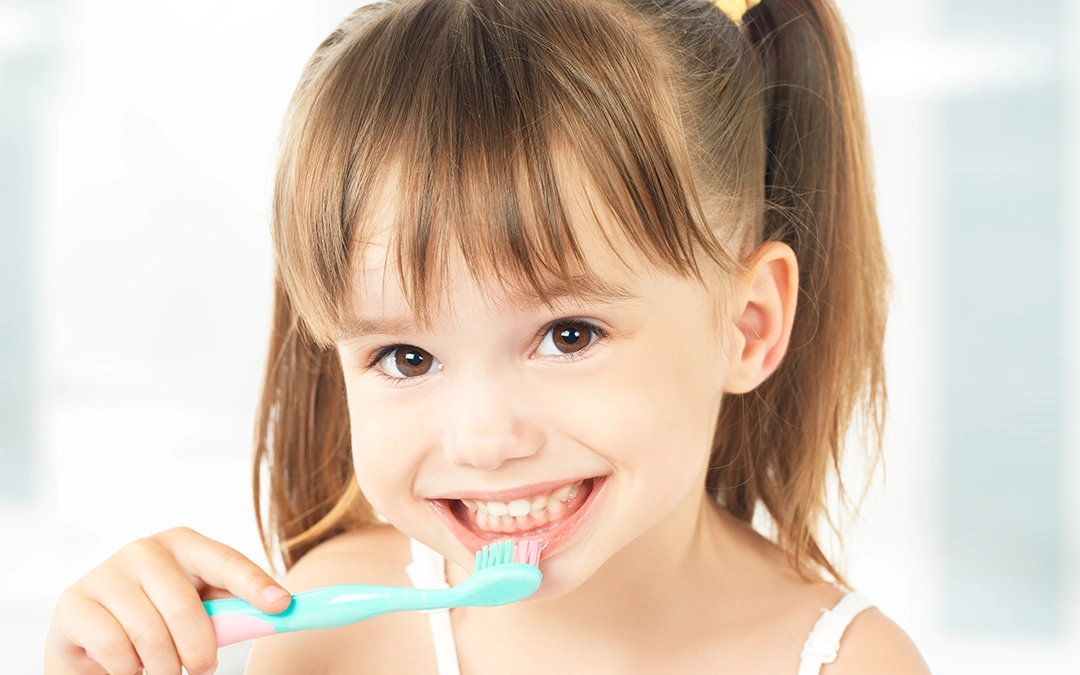
Age 3 and beyond
As your child’s teeth begin to touch, it’s time to add flossing to their daily routine. You can also start using a pea-sized amount of children’s low-fluoride toothpaste. Continue to supervise brushing until they’re about 6 to 8 years old, because most kids still need a little help to clean every spot properly.
Encourage independence gradually and make it a moment to share together. Praise their effort, celebrate their progress, and remind them that every brush brings them closer to a bright, healthy smile.
Eat right for healthy teeth
What your child eats and drinks has a big impact on their smile. Sugary snacks and drinks are the biggest culprits when it comes to tooth decay. Over time, even juices and flavoured milks can do damage.

Encourage water as their go-to drink, and offer plain milk in moderation. When it comes to snacks, fresh fruits, crunchy veggies, cheese, and yoghurt are great options. They’re packed with nutrients that support healthy teeth and gums while helping to wash away food particles and balance acids in the mouth.
Small swaps, like water instead of soft drink, or cheese instead of lollies, can make a big difference to your child’s long-term oral health.
Thumb sucking, dummies, and habits
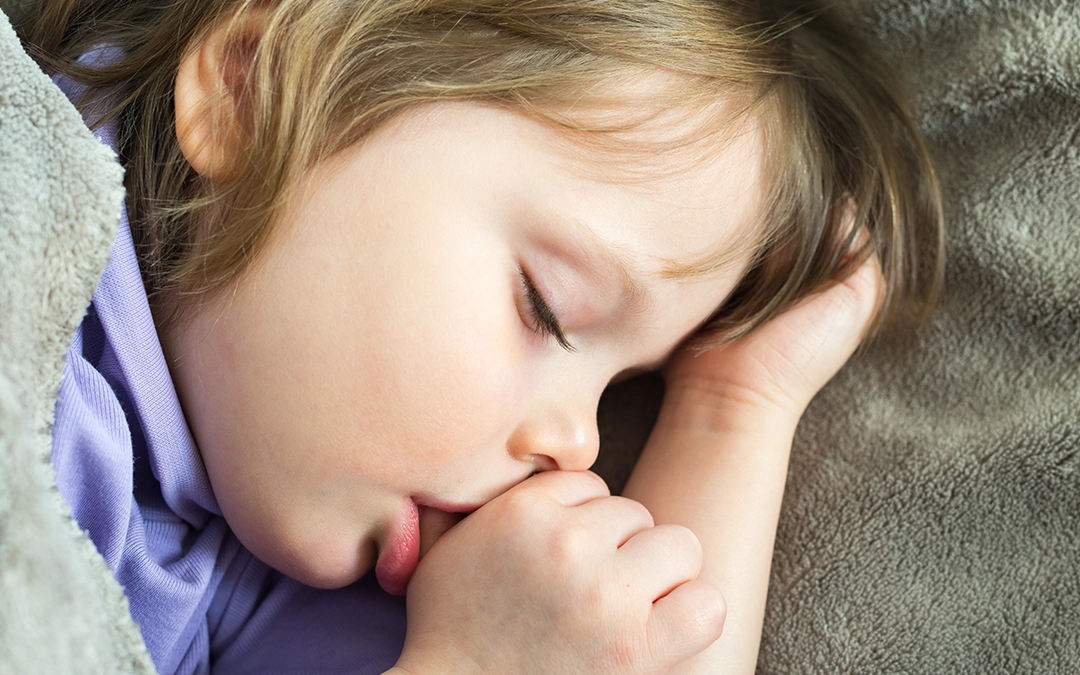
Thumb sucking and dummy use are perfectly normal ways for babies and young children to comfort themselves. In the early years, these habits usually don’t cause harm but can be quite helpful in settling little ones down and providing them with a sense of security.
If thumb or dummy use continues beyond the preschool years or becomes quite strong, it can begin to affect how the teeth and jaws grow. Every child develops at their own pace, so occasional use for comfort isn’t usually a concern. If you’re unsure or have any worries, speak with your dentist. They can guide you on gentle, positive ways to help your child gradually let go of these habits while keeping their smile developing beautifully.
Don’t let decay start from the baby bottle
When it comes to your baby’s bottle, it’s best to avoid sugary drinks like juice or flavoured milk. These liquids tend to linger around the teeth and coat them in sugar. This gives mouth bacteria a steady source of sugar to turn into acid. Over time, that acid weakens the enamel and can lead to early decay. If you give your child sweet drinks near bedtime it can be especially damaging, as saliva flow slows during sleep and the mouth can’t easily wash those acids away.
So, keep their smile protected by sticking to water,plain milk or other drinks recommended by your healthcare professional, and start introducing a regular drinking cup around 12 months of age. Take some time to clean your baby’s teeth and gums every day, and avoid letting them fall asleep with a bottle. Their future smile will thank you for it.
Dental emergencies
If your child chips or knocks out a tooth, act quickly and calmly. Call your dentist straight away for advice on what to do next. Prompt care gives the best chance of saving the tooth and preventing further issues. Keeping calm and getting help early can make all the difference to your little one’s comfort and smile.
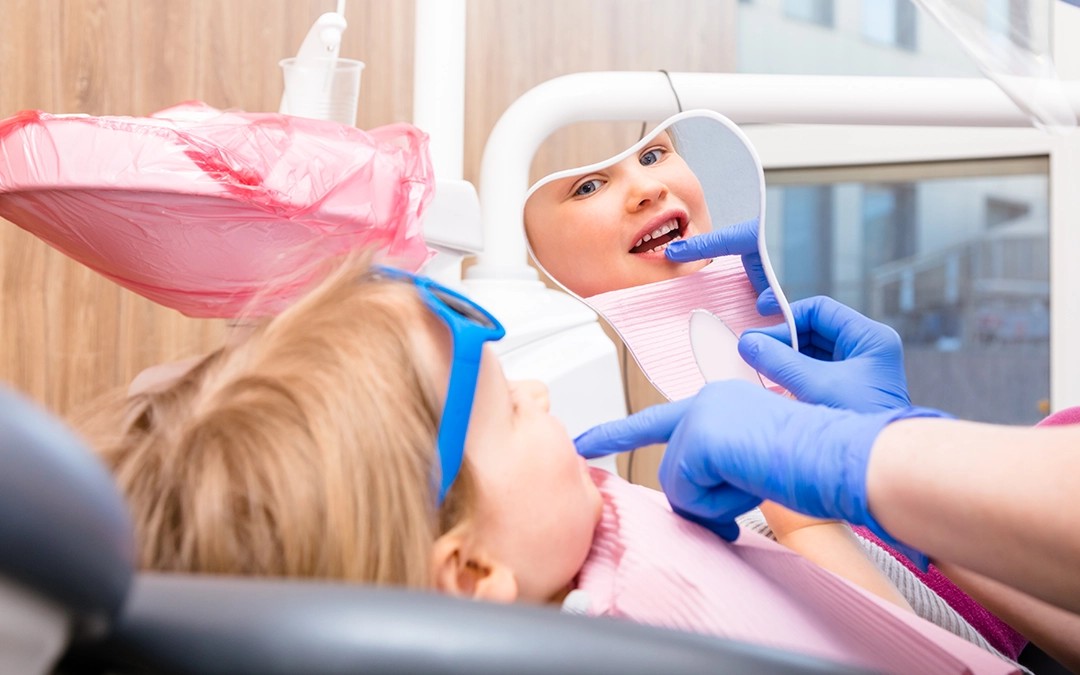
Where to from here?
Small, consistent habits right now can build a future of healthy smiles. From daily brushing and a balanced diet to those all-important early dental visits, every bit of care you give now helps set your child up for a lifetime of strong, confident teeth. Keep in mind that it’s not a solo mission. Your dentist is your partner in keeping that little smile shining bright through every stage of growing up.
Where to from here?
Your dentist is a vital partner in keeping your child’s smile healthy as they grow. Regular check-ups help spot potential issues early, offer personalised advice, and give you peace of mind. Never hesitate to ask questions or share concerns. The team at Showground Dental finds great satisfaction in supporting your child’s wellbeing, confidence, and lifelong oral health. We’re with you for a lifetime of smiles!
By building healthy habits together, you’re doing more than caring for teeth. You are crafting your child’s confidence, comfort, and whole-body health. Start early, stay consistent, and make every oral care moment a happy one.
Begin with a little care, and you can unlock a lifetime of healthy smiles.

